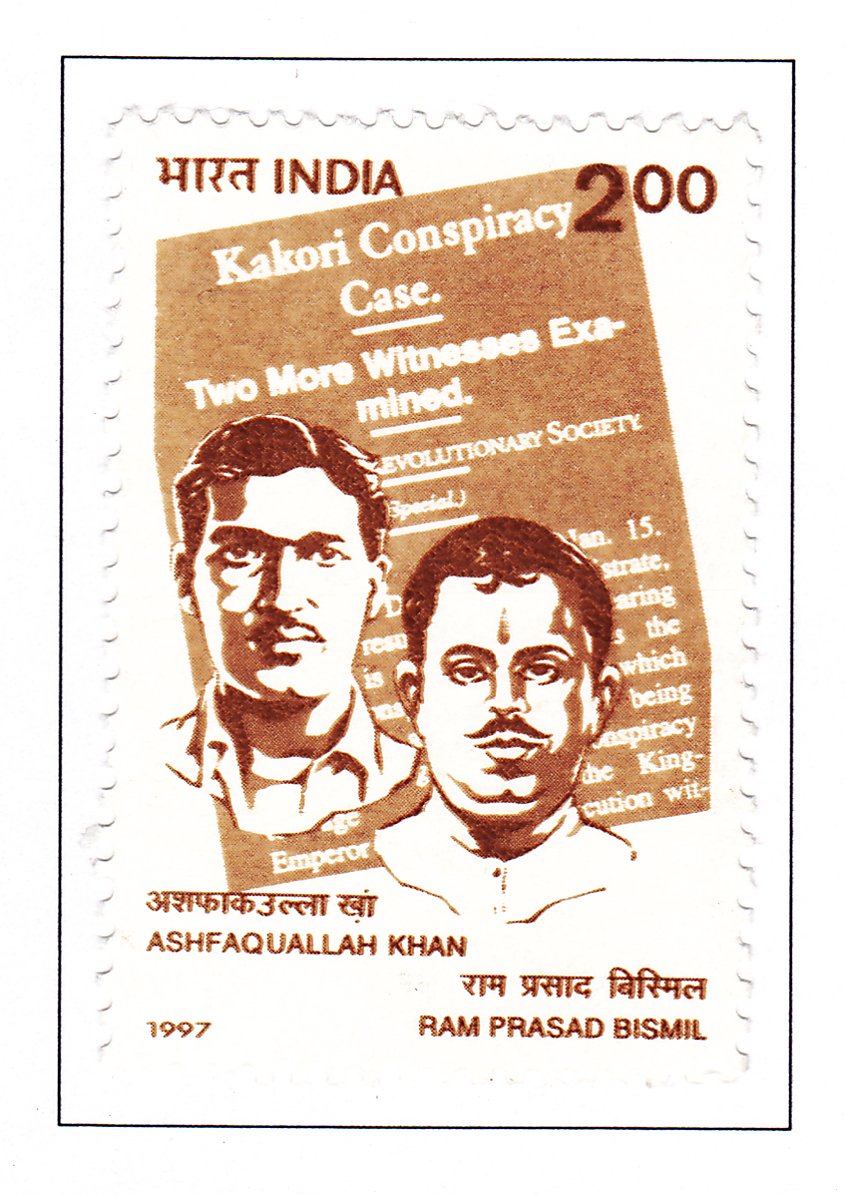Ram Prasad Bismil and Ashfaquallah Khan

Technical Data
| Date of Issue | December 19, 1997 |
|---|---|
| Denomination | Rs. 2 |
| Quantity | 400,000 |
| Perforation | comb 13 |
| Printer | Security Printing Press, Nashik |
| Watermark | No Watermark |
| Colors | Red Brown |
| Catalog Codes |
Michel IN 1601 Stamp Number IN 1662 Yvert et Tellier IN 1367 Stanley Gibbons IN 1765 |
| Themes | Anniversaries and Jubilees | Famous people | Men | Revolutionaries |
Table of Contents
Commemorative Stamp: Martyrs Ram Prasad Bismil and Ashfaqullah Khan
Historical Context:
- The revolutionary movement of the early 20th century, particularly in the 1920s, played a pivotal role in India’s struggle for independence. The bravery of young revolutionaries, who fought for freedom and willingly accepted imprisonment or death, awakened the nation’s consciousness and unified the people in their determination to attain independence.
Ram Prasad Bismil:
- Known as ‘Bismil,’ Ram Prasad Bismil was a key figure in the revolutionary movement. From a young age, he was deeply committed to freeing India from British rule.
- Mainpuri Conspiracy (1919): Though Bismil was actively involved, he escaped arrest and continued his efforts to organize and strengthen the Hindustan Republic Association (HRA). The HRA aimed to abolish all forms of oppression in India through armed revolution.
Ashfaqullah Khan:
- A close associate of Bismil, Ashfaqullah Khan was also at the forefront of the revolutionary activities. Together, they worked towards the goal of liberating India from colonial rule.
Kakori Conspiracy (1925):
- To fund their revolutionary activities, Bismil, Ashfaqullah Khan, and others planned and executed a train robbery near Kakori Station on the Lucknow-Saharanpur line in August 1925. Their goal was to loot government money without resorting to unnecessary violence. However, during the robbery, one person was killed.
- The police conducted widespread arrests and, after brutal interrogations, gathered enough information to arrest Bismil, Ashfaqullah Khan, and their associates.
Kakori Conspiracy Case:
- 22 revolutionaries were put on trial, which lasted for a year and a half. The sentences were harsh, with Bismil, Ashfaqullah Khan, Rajendra Lahiri, and Roshan Singh sentenced to death by hanging.
- Martyrdom: On December 19, 1927, they were executed, becoming martyrs for the cause of Indian independence.
Legacy:
- The sacrifices of Ram Prasad Bismil, Ashfaqullah Khan, and their fellow revolutionaries are etched in the annals of Indian history. Their courage and commitment to the motherland continue to inspire generations.
- After Bismil’s death, leaders like Chandrasekhar Azad, Bhagat Singh, and Sukhdev carried forward the revolutionary movement, aiming to influence the national movement in a more radical and revolutionary direction.
Commemorative Stamp:
- The Department of Posts has issued a special commemorative stamp to honor the martyrdom of Ram Prasad Bismil and Ashfaqullah Khan. This stamp pays homage to the countless heroic men and women who suffered imprisonment and gave their lives during India’s struggle for freedom.
